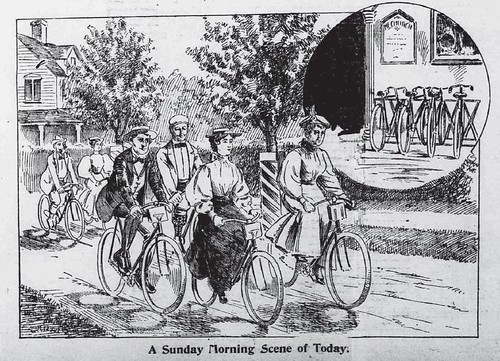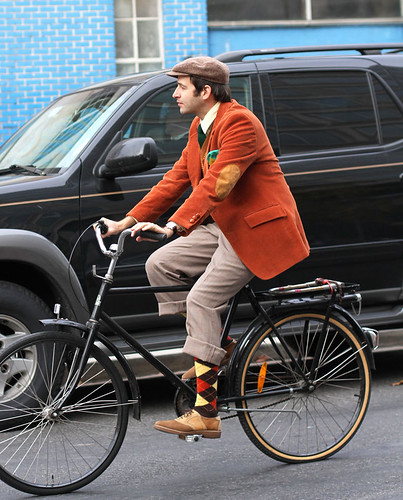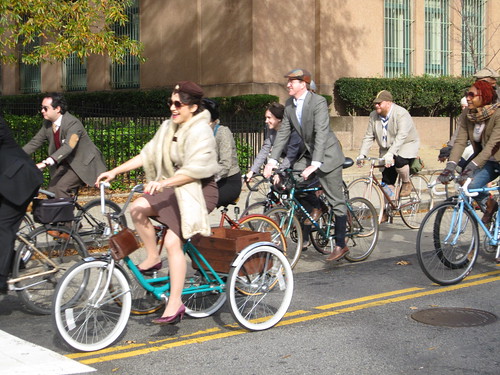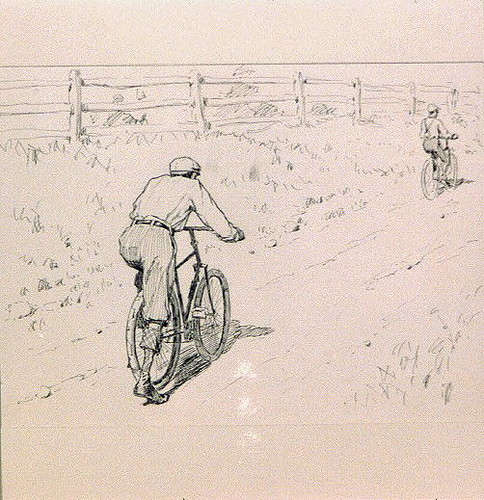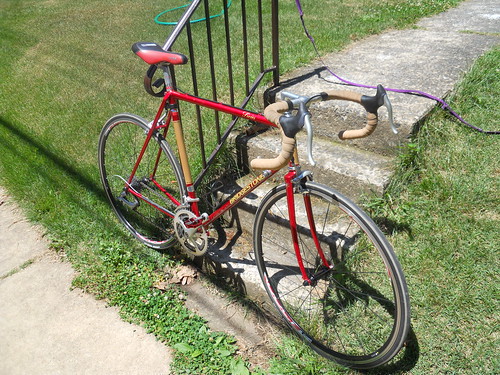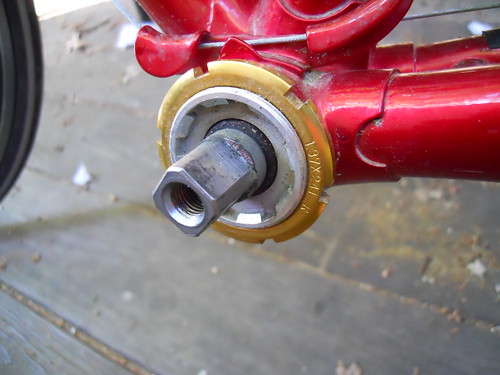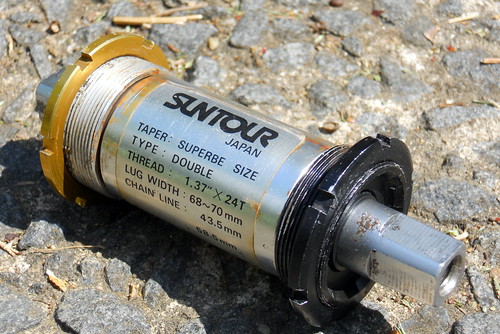The LA Times has
an article about a new bikeshare program in Los Angeles: "Los Angeles Mayor Antonio Villaraigosa will unveil a $16-million bike-share program Sunday that aims to put thousands of bicycles at hundreds of rental kiosks across the city."
Much of how the LA bikeshare program will be structured is like Capital Bikeshare (which isn't particularly surprising) however the bikes themselves are fairly different. I don't really get how the company, Bike Nation, makes money at this - they pick up the entire capital investment cost (the sixteen million bucks).
Here is another description of the business aspects - the comments are fairly interesting.
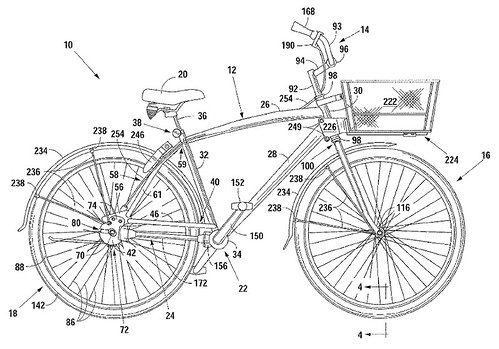 It appears this patent is for the Bike Nation bikeshare bike, with airless tires, shaft drive, and absurd basket (but not with final design's step through frame)
It appears this patent is for the Bike Nation bikeshare bike, with airless tires, shaft drive, and absurd basket (but not with final design's step through frame)To me the technical aspects of the Bike Nation bikeshare bike are the most interesting. The LA Times article notes that, "The bicycles are made without a chain and have special tires to reduce the possibility that they will get a flat or break down during their trip."
Opinionated as I may be (for someone who doesn't really know that much), I do not have strong feelings about the airless tire business. Sheldon Brown, some years ago,
didn't express much enthusiasm, noting that, "Airless tires have been obsolete for over a century, but crackpot 'inventors' keep trying to bring them back. They are heavy, slow and give a harsh ride. They are also likely to cause wheel damage, due to their poor cushioning ability. A pneumatic tire uses all of the air in the whole tube as a shock absorber, while foam-type 'airless' tires/tubes only use the air in the immediate area of impact." However it doesn't seem impossible that someone clever could come up with a design that could do a decent job with shock absorbing and not add much weight or performance problems. It does appear that most airless tires to date are not very easy to get on or on the wheel rim, but for a bikeshare bike that would be a mechanic's problem.
I have much less enthusiasm for the shaft drive idea.
The Bike Nation bike doesn't use a traditional chain but rather a shaft drive. Shaft drives have been around since the 1890s but never really caught on since they are (a) more expensive, and (b) less efficient. Also, taking a rear wheel off a bike with a shaft drive is going to be more annoying to repair a flat than a standard chain bike (but of course not a problem there with airless tires!).
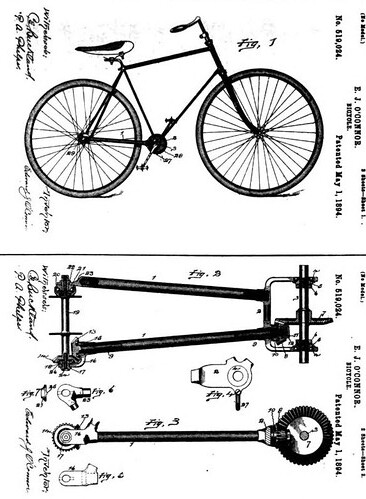 Shaft drive bikes have been around . . . practically forever
Shaft drive bikes have been around . . . practically foreverShaft drive intuitively seemed to some like a great idea compared to "dirty" traditional chains, but they never became popular. For motorcycles somewhat, for bicycles no. That doesn't mean that various bike companies haven't tried to bring it back from time to time . . .
Eventually
Bike Nation will supply more info about
"What’s so special about the Bike Nation bicycle?" but for now, the link for "more info here" doesn't work. (Perhaps they are still doing research.)
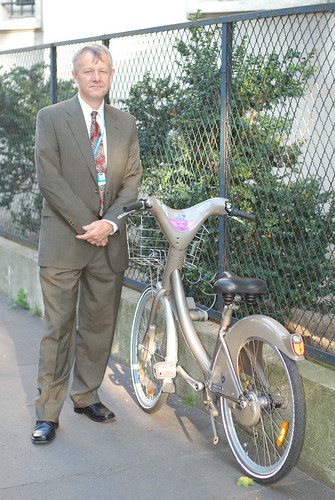 A bikeshare program bike in Paris, with a chain and air-filled tires - but what do the French know about cycling
A bikeshare program bike in Paris, with a chain and air-filled tires - but what do the French know about cyclingAlso, the French bikeshare bike has a deep basket, while the LA bikeshare bike has a flat shallow basket. I guess with bungee cords stuff could be made to stay in the basket.
 The Enlightened Cyclist: Commuter Angst, Dangerous Drivers, and Other Obstacles on the Path to Two-Wheeled Trancendence by BikeSnobNYC
The Enlightened Cyclist: Commuter Angst, Dangerous Drivers, and Other Obstacles on the Path to Two-Wheeled Trancendence by BikeSnobNYC